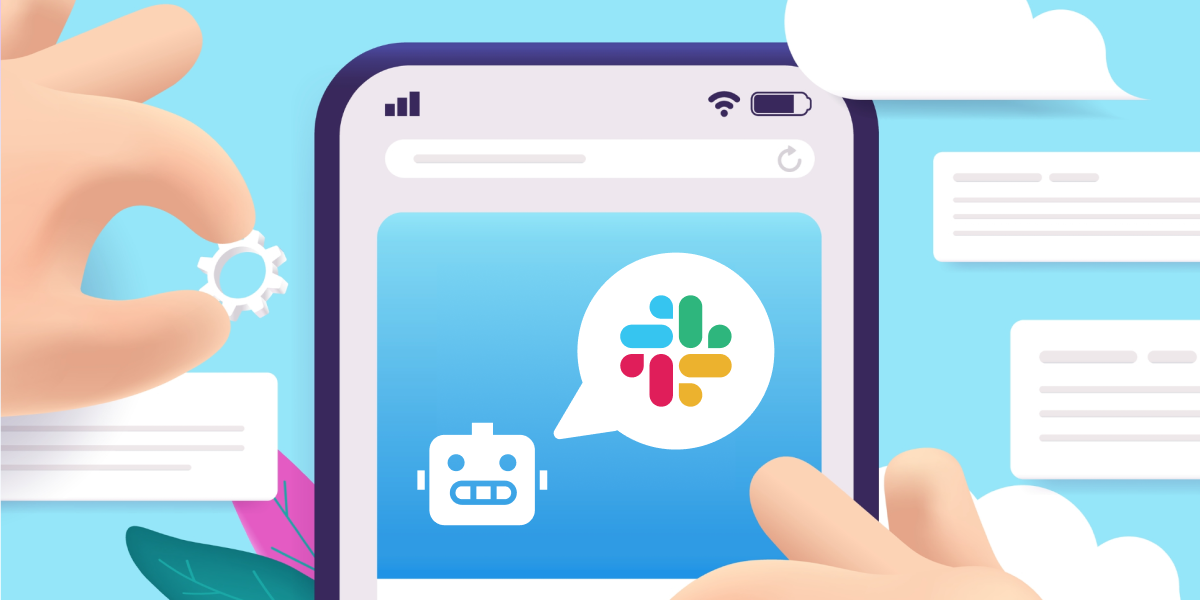April 24th, 2024
A Step-by-Step Guide
by Asmitha Rathis, Machine Learning Engineer at QueryPal
April 24th, 2024
Introduction
Slackbots are invaluable tools for enhancing productivity and streamlining workflows within Slack channels. From identifying their purpose to coding, testing, and deploying, this guide covers the comprehensive steps involved in building a functional and effective Slackbot.
- Define the Purpose and Functions: Clearly identify what you want your Slackbot to accomplish. Whether it's handling task automation, retrieving data, or delivering notifications, understanding its purpose will drive the development process.
- Design the User Interaction: Plan how users will interact with your Slackbot. Decide if it will understand natural language or respond to specific triggers and keywords. Map out the bot's commands, expected inputs, and potential outputs. Familiarize yourself with the possible options for interactions like commands, mentions, buttons.
- Set Up Your Development Environment: Prepare your development setup with tools like a code editor and a server (local for development and cloud for deployment). Ensure you have access to the Slack API for integration.
- Register Your Slackbot with Slack: Create a new app in the Slack API portal to obtain API tokens, configure OAuth permissions, and set the necessary scopes for your bot’s activities within Slack.
- Write the Code: Develop your bot’s functionality using a programming language compatible with Slack’s APIs, such as Node.js, Python, or Java. Code the logic for sending and receiving messages, handling events, and interacting with users.
- Integrate Third-Party APIs (Optional): For enhanced functionality, integrate external APIs to allow your Slackbot to perform additional tasks like pulling CRM data or managing emails.
- Test Your Bot: Thoroughly test your Slackbot in a development Slack workspace to ensure it correctly handles commands and interacts as expected without errors.
- Block Kit is your friend: Utilize Slack's Block Kit to refine the user interface. Block Kit is a UI framework for Slack apps that enables the creation of visually appealing and highly interactive messages. Iterate on your bot's design by testing different blocks and layouts to enhance user engagement.
- Deploy Your Bot: Deploy your Slackbot to a cloud server and update your Slack app settings to connect to your deployment URL. Ensure that your server configuration supports continuous uptime and efficient performance.
https://api.slack.com/block-kit - Submit to the Slack App Directory: Once your bot is fully tested and operational, submit it to the Slack App Directory. This involves meeting Slack’s guidelines and standards for publication, which may include security audits and user documentation.
- Monitor and Iterate: Post-deployment, continuously monitor your bot’s performance and collect user feedback. Use this feedback to refine functionalities, fix issues, and roll out updates to keep your Slackbot relevant and useful.
Additional Considerations:
- Handle Rate Limits: Be mindful of the rate limits on API calls to avoid disruptions. Implement logic to handle retries and back-off in case of rate limiting.
- Storing Secrets: Ensure all sensitive data such as API keys and passwords are encrypted and stored securely. Never hard-code secrets into your source code.
- Understand Slack Scopes: Familiarize yourself with the necessary Slack scopes required for your bot to function as intended, to ensure proper permissions and functionality.
- Prepare for Slack App Submission Time: Be aware that the app submission process to the Slack Directory can be lengthy. Plan accordingly and be prepared for potential delays.
Conclusion
Building a Slackbot is a dynamic project that can significantly contribute to your team’s productivity. Following these detailed steps, from initial concept to deployment and beyond, ensures the creation of a bot that not only meets your specific needs but also engages and serves users effectively.
Further Reading and Resources:
- Slack API Documentation : https://api.slack.com/docs
- Block Kit in Slack: https://api.slack.com/block-kit
This guide provides an all-encompassing overview of the Slackbot development process, ensuring you have the necessary tools and knowledge to build a tailored and efficient bot.

